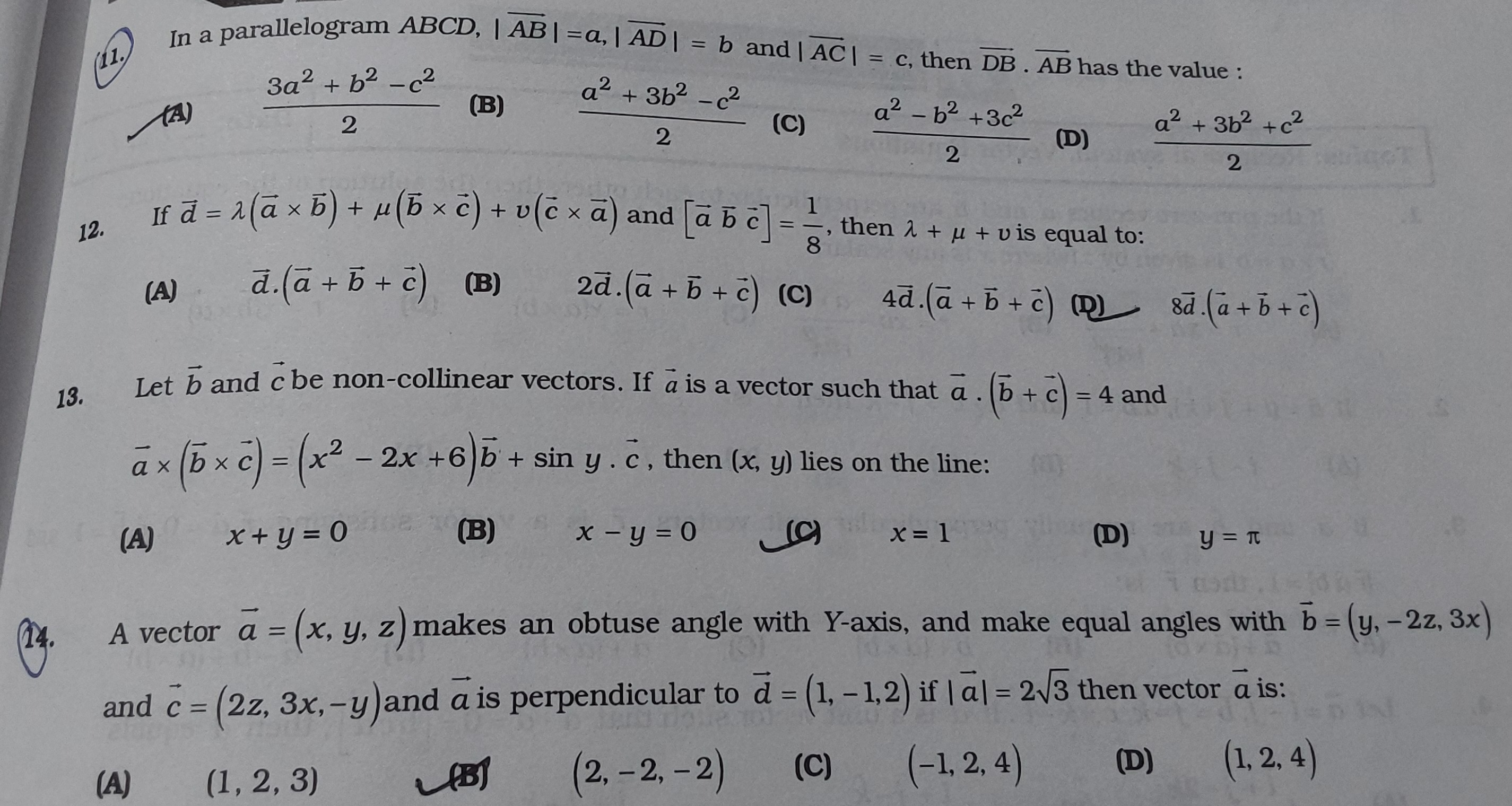Question
Question: In a parallelogram $ABCD$, $|AB| = a$, $|AD| = b$ and $|AC| = c$, then $\overrightarrow{DB}.\overrig...
In a parallelogram ABCD, ∣AB∣=a, ∣AD∣=b and ∣AC∣=c, then DB.AB has the value:

23a2+b2−c2
2a2+3b2−c2
2a2−b2+3c2
2a2+3b2+c2
23a2+b2−c2
Solution
Let the parallelogram be ABCD. We are given ∣AB∣=a, ∣AD∣=b, and ∣AC∣=c. We can represent the sides as vectors: AB and AD. The diagonal AC=AB+AD. The other diagonal DB=AB−AD.
We are asked to find DB⋅AB. DB⋅AB=(AB−AD)⋅AB Using the distributive property of the dot product: DB⋅AB=AB⋅AB−AD⋅AB We know that AB⋅AB=∣AB∣2=a2. So, DB⋅AB=a2−AD⋅AB Now we need to find AD⋅AB. We use the given length of the diagonal AC. ∣AC∣2=c2 ∣AB+AD∣2=c2 (AB+AD)⋅(AB+AD)=c2 ∣AB∣2+∣AD∣2+2(AB⋅AD)=c2 a2+b2+2(AB⋅AD)=c2 From this, we can express the dot product: 2(AB⋅AD)=c2−a2−b2 AB⋅AD=2c2−a2−b2 Substitute this back into the expression for DB⋅AB: DB⋅AB=a2−(2c2−a2−b2) DB⋅AB=a2−2c2+2a2+2b2 DB⋅AB=22a2+a2+b2−c2 DB⋅AB=23a2+b2−c2
